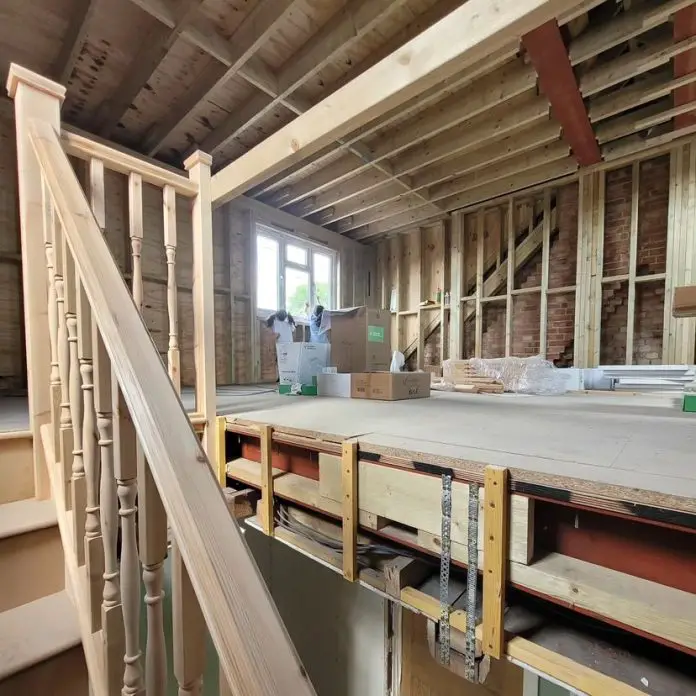Many people living in the city know that a spacious home is quite a luxury. But there are several ways to make your apartment or space look and feel bigger. For instance, consider a loft conversion that can help increase your floor area to up to twice as much as you currently have. Interested? Then read on for this article provides a guide on planning a successful loft conversion.
A loft originally refers to a high-up space in a building, usually directly below the roof. In houses, this is often called an attic and is used for storage. However, there is a more modern meaning of loft. It refers to a large, open-plan living space that has been converted from an industrial building, like a warehouse or factory. These lofts are typically spacious and have high ceilings, large windows, and exposed brick or concrete walls.
In metropolitan areas where affordable accommodation is scarce, loft conversions have become a popular way to add valuable living space to existing properties. They offer an exciting opportunity to transform underutilized roof voids into functional and stylish rooms. However, the technical aspects of a loft conversion can be complex, and require the input of building and construction experts.

Feasibility Assessment
Before discussing the specifics, it is very important to assess the feasibility of converting your loft. In this case, you may need to consult a structural engineer to assess if the foundation of your space can support the conversion.
You must also measure the available head height, ensuring you can comfortably stand downstairs and sit up in the loft. More importantly, you need a budget plan that includes the cost of the design and construction and the furnishings you will need once the conversion is completed. The money you can afford to spend will somehow dictate the type of loft you can construct in your space.
Here are some key factors to consider:
- Roof Type: Pitched roofs with sufficient headroom (typically exceeding 2.3 meters) are generally ideal spaces. Flat roof conversions may require raising the roof structure, adding significant complexity and cost.
- Structural Integrity: The existing structure needs to be assessed by a qualified structural engineer to ensure it can handle the additional weight of the conversion. Strengthening works may be necessary.
- Headroom and Floor Area: Building regulations dictate minimum headroom requirements (often 2 meters) and usable floor area. Careful planning is required to maximize livable space while adhering to regulations.
- Access: Creating a safe and compliant staircase is essential. Spiral staircases might be space-saving but may not meet building code requirements. Consider the impact of installing a new staircase on the existing layout.
Planning and Design of Loft Conversion
Once feasibility is established, careful planning and design come into play. It is important to think about how you will use the loft space because this can affect your design. Do you want to use it as a bedroom or an office? In most loft-type designs, the office space is planned below the loft because the latter is used as a sleeping quarter.
Nevertheless, it is up to you to decide how you want to use it. Also, try to envision how you want the loft to look in your space. You can opt for a dormer-loft conversion if you wish to have additional floor space and headroom. Still, if you prefer skylights instead of converting your existing space, then a Velux conversion would be more suitable for your needs. Here are pertinent factors to consider in design and planning:
- Space Planning: Carefully consider the intended use of the loft space (bedroom, bathroom, office) and approach an expert to design a layout that optimizes functionality and traffic flow. The utilization of 3D modelling software to visualize different layouts and ensure efficient use of space can come in handy.
- Building Regulations: Understanding and adhering to local building regulations is paramount. These regulations cover fire safety, structural integrity, sound insulation, ventilation, and more. Consulting a registered construction expert can ensure your design complies with all necessary regulations.
- Natural Light and Ventilation: Loft conversions can sometimes feel enclosed. Strategically placed roof windows (Velux windows) or dormer windows can introduce natural light and improve ventilation.

One of the best things you can do to convert your space into a loft-type design is to get the help of experts. The reputable loft conversion experts behind the Deluxe Lofts in London suggest that you opt for the services of professionals within your vicinity. This way, you can visit them as needed, ensuring your concerns are taken care of.
Contractors dealing with loft conversions within your area will also be very familiar with the building rules and regulations. They will ensure that you comply with the building codes that may vary from region to area. Fortunately, you can now search online sources for contractors specializing in loft conversions within your locality. Just remember to verify their credentials and experience by looking into what their previous clients have to say about their services.
Construction Considerations
The construction phase requires careful execution to ensure a high-quality and safe finished product:
- Structural Works: Depending on the initial assessment, structural reinforcement works like installing steel beams or strengthening floor joists might be necessary. Hiring qualified structural engineers and builders is important for this stage.
- Flooring, Insulation, and Soundproofing: Installing proper insulation in the roof and walls is vital for thermal efficiency and noise control. Choosing the right flooring material that complements the overall design and can handle potential moisture variations is also important.
- Electrical and Plumbing Systems: Depending on the intended use of the loft, new electrical wiring and plumbing installations might be required. Hiring certified electricians and plumbers is essential to ensure safety and compliance with regulations.
Additional Considerations
- Building Permits and Approvals: Obtaining the necessary building permits and approvals from local authorities is important before commencing construction.
- Party Wall Agreements: If your loft conversion involves adjoining a neighbouring property, party wall agreements outlining shared responsibilities and access rights might be necessary.
- Cost Management: Loft conversions can be a significant investment. Obtaining quotes from multiple qualified builders and creating a detailed budget with contingency plans for unforeseen costs is essential.
Conclusion
By carefully considering the technical aspects outlined above, a loft conversion can be a rewarding project that adds significant value and functionality to your property. Remember, consulting qualified professionals like structural engineers, architects, and builders throughout the process is key to a successful and compliant loft conversion.
For a successful loft conversion, your best option is to get the help of experts who can ensure that the process is done right the first time around. But remember to also make a list of your initial considerations before you plan and design your loft conversion project. Rest assured that if you follow the tips in this guide, you will make your loft conversion dream a reality.










